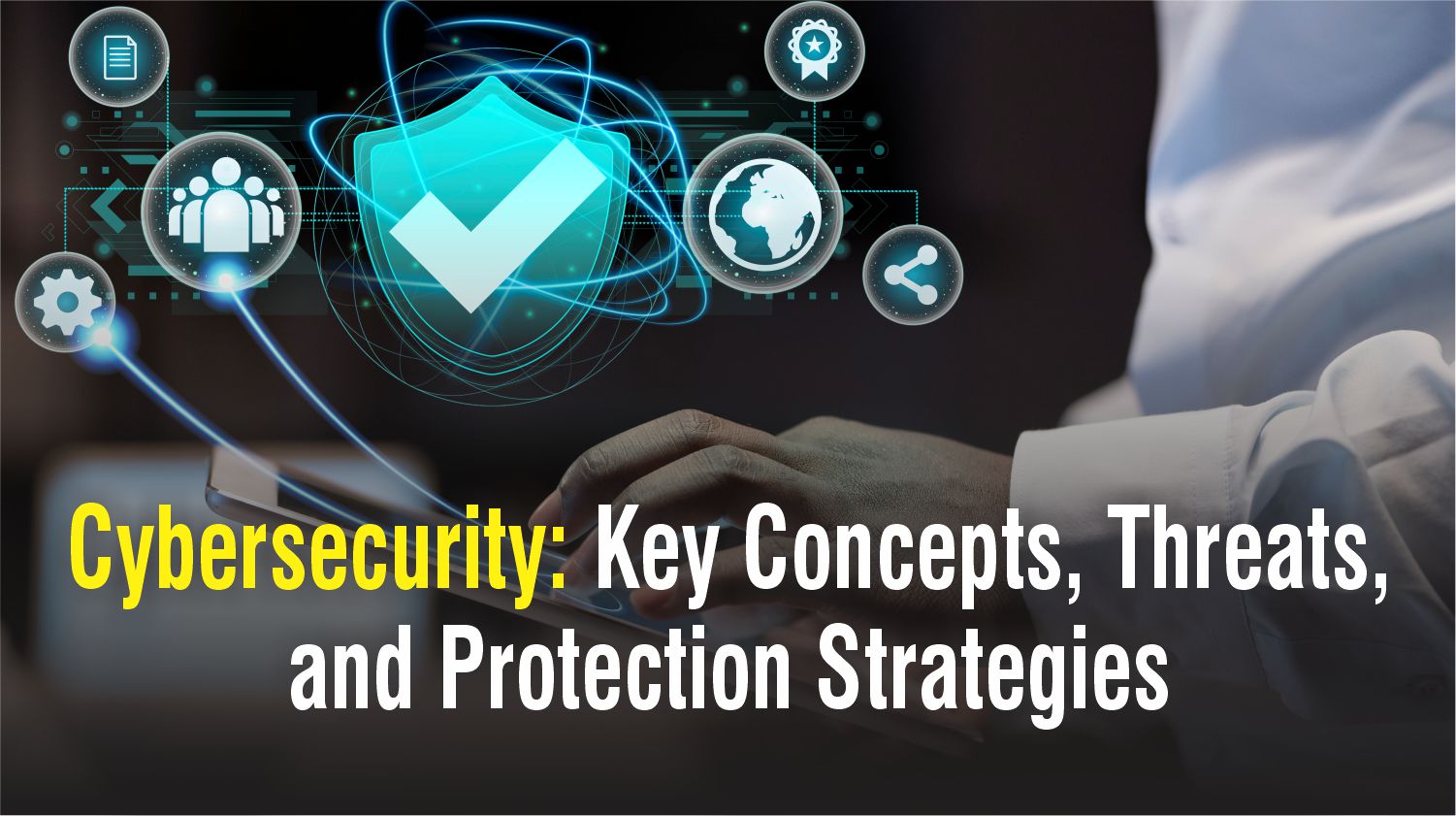Blogs On Programming

Cybersecurity: Key Concepts, Threats, and Protection Strategies
on May 13 2025
Cybersecurity has become a huge challenge due to technology playing a major role in our lives. Though technology often provides a lot of benefits, its extensive use has also brought along a huge rise in cyberattacks. This has, in turn, led to both personal and professional data being at risk, hence the need for people to stay informed.
What are cyberattacks?
A common question that is often asked is: What constitutes a cyberattack? The answer is anything that disrupts the function of computer systems. The most common cyberattacks include the following:
Malware:
Malware is short for malicious software and refers to any unwanted software that has the potential to inflict damage to systems, capture data, and perform other nefarious deeds.
Social engineering:
This is a collective term that involves the use of deception in which a cybercriminal convinces the target to divulge sensitive personal information. The attacker will then use the acquired information to inflict damage on organizational systems. Social engineering attacks include phishing and masquerading.
Denial-of-Service (DoS) Attacks:
This is a group of cyberattacks that prevent authorized users from accessing services by rendering the system unusable. A distributed version of such kind of attackers can involve multiple attackers as well. Rendering systems that are unavailable can put an organization in a very precarious position, sometimes leading to permanent closure.
Cybersecurity Essentials You Always Wanted to Know by Vibrant Publishers
Essentials of Cybersecurity
In case of the current digital landscape and the growing risk of cyberattacks, people need to be informed. Cybersecurity Essentials You Always Wanted to Know seeks to address this knowledge gap. It aims to make everyone aware of what cybersecurity entails and its importance. The result should be a reduction in cyber incidents and attacks. Cybersecurity Essentials takes a programmatic approach to assist you in understanding the discipline of cybersecurity.
The discipline of cybersecurity comprises the following key elements:
Cybersecurity, Governance, Risk, and Compliance (GRC):
Cybersecurity GRC is a crucial part of any cybersecurity program in an organization, as the success of any such program relies on the strength of these elements. GRC lays the foundation for other actions meant to enhance cybersecurity.
Database security:
Organizations often handle a lot of personal and customer information and data. This includes personal details, financial documents, and sensitive business information. Such information, when compromised by an attacker, might lead to cases of impersonation and fraud. As this information is typically kept in databases, database security becomes of utmost importance.
Business resilience:
Business resilience is the organization’s ability to detect incidents and disasters and recover from such assists in maintaining business continuity. Cyber incidents disrupt business operations. Effective cybersecurity ensures smooth operations and uninterrupted continuity of businesses.
Cloud security:
Due to the advantages of the cloud, including convenience and cost-effectiveness, we are seeing a lot of both businesses and individuals moving operations to the cloud. Customers and clients have trust in cloud platforms as they know that their data is well-secured.
Identification and Access Management (IAM):
This is currently a key issue in cybersecurity. This is due to the many incidents of unauthorized access. That is why the adoption of strong authentication, including the implementation of Multi-Factor Authentication (MFA), is necessary. The protection of identity privileges is also given prominence in the book.
Cryptography:
Every cyber-aware individual or organization should ensure that cryptography is implemented to protect sensitive data from unauthorized access. This should be applied to all the data, whether in motion, at rest, or in process. Cryptography is usually effective when accompanied by other security technologies such as firewalls, intrusion detection systems, and secure Wi-Fi connections to protect the network infrastructure.
Emerging Trends in Cybersecurity
Cybersecurity Essentials addresses emerging trends to allow you to stay up to date with current developments ate not be caught unaware. Some of the major trends include the following:
Artificial Intelligence and Machine Learning (AI/ML):
AI and ML can be used for a variety of activities in cybersecurity. This ranges from detection and response to cyber threats in general, thereby improving the process of managing cyberattacks. However, you should also note that the same technologies can also be used by cybercriminals to perform even more sophisticated attacks. Hence, it is imperative to stay ahead of criminals in this discipline in terms of knowledge.
Zero Trust Architecture (ZTA):
The concept of ZTA has been gaining importance in recent times as one of the key methods of dealing with current cyberattacks that are more sophisticated. The concept assumes that an attack may come either from inside or outside the network, and hence, no one should be trusted. This promotes the enforcement of strict access controls.
Cloud Security:
Security becomes critical as more organizations move to the cloud. There is no doubt that cloud security will present potential challenges in cybersecurity in the future, hence the emphasis.
Conclusion
Cybersecurity is an ever-changing landscape, and that is why changes in cybersecurity require constant alertness and vigilance. The takeaway in cybersecurity is that it’s everybody's responsibility, hence the need to stay informed. The above-provided information allows organizations and individuals to stay updated with emerging threats and newer threats, so one can protect against such situations. To learn more about Cybersecurity and how you can secure your organization, check out my recent publication, Cybersecurity Essentials You Always Wanted to Know.
Elastos Chimwanda, author of Cybersecurity Essentials You Always Wanted to Know.
This blog has been written by Elastos Chimwanda, the author of Cybersecurity Essentials You Always Wanted to Know.Read more about the book here:
If this blog has piqued your interest, here’s some additional reading material based on computer science and technology topics:
What role does Data Analytics play in decision-making?
Demystifying Machine Learning: A Practical Guide for Beginner
Don’t Believe These 7 Myths About Blockchain

